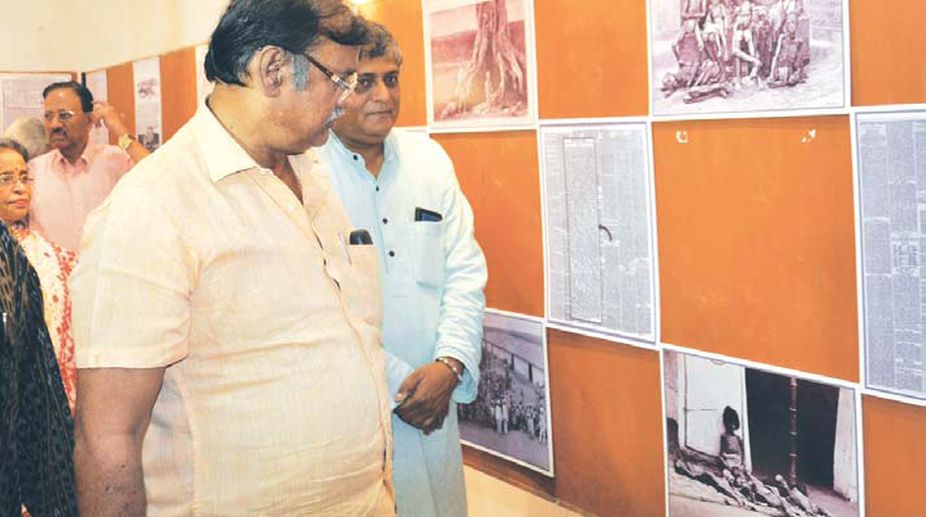INTACH discovers ruins of ancient Buddhist site in Odisha
The Odisha Chapter of Indian National Trust For Art & Cultural Heritage (INTACH) has discovered the remnants of a Buddhist site near Ganeswarapur village in Tangi Tehsil of Cuttack district.

Exhibition on Na'Anka Durbhikshya, the Great Orissa Famine of 1866, inaugurated in Bhubaneswar. (Photo: SNS)
An exhibition of photographs, sketches and newspaper reports on the Great Orissa Famine of 1866 was inaugurated by Minister Tourism and Culture, Mr Ashok Panda at the State Archives here on Monday.
The exhibition is being organised by The Indian National Trust for Art and Cultural Heritage (INTACH) and Odisha State Archives. Newspaper reports published in the overseas press of the 1866-68 period along with sketches, cartoons, drawings and photographs were put up depicting the condition and sufferings of the people.
Panda said that the “Na’Anka Durbhikshya” (Great Odisha Famine) was a dark forgotten chapter of Odisha’s history. Even though the events that happened have been pushed to one corner of history, it has been a part of Odia consciousness and subconscious ever since.
Advertisement
S K B Narayan, Convener of The Indian National Trust for Art and Cultural Heritage said that even today, 150 years after the Great Famine, Odisha faces regular threats of calamities like droughts, floods and cyclones, and crop failures.
He said that the exhibition would be taken to the other INTACH chapters of Bhadrak, Balasore and Baripada. Anil Dhir, who has curated the exhibition, said that a suitable memorial of the Great Famine should be set up in memory of the million and a half who had perished.
He said that the Famine was not an accident of nature. It was not providence; rather it was a series of mistakes. For many decades after the great famine, it was simply a dark and even humiliating experience which the survivors, and the survivors of the survivors, had little wish to recall, the anguish of a past in which men and women barely survived.
Dhir said that we owe the dead as much respect and honour as we give to any brave action or any other defining moment of our history. Ramesh Mohapatro, Convener of the Pipili Sanskrutika Parishad said that a suitable memorial will be set up in Pipili in memory of the million who perished in the Famine.
Amiya Bhusan Tripathy, State Convener of INTACH felt that a history of the Famine and the post Famine years should be written afresh. There was not a single narrative of the Great Orissa Famine available.
He said that valuable information can be collected from various sources in India and abroad. The newspaper reports of the period, which are displayed in the exhibition, give a horrific account.
The British Parliamentary Debates, the Famine Commission Report and contemporary writings of the time should be studied. Shashanka Sekhar Das, the Limca Book of Record holder for the largest collection of newspapers in India was felicitated on the occasion.
Advertisement